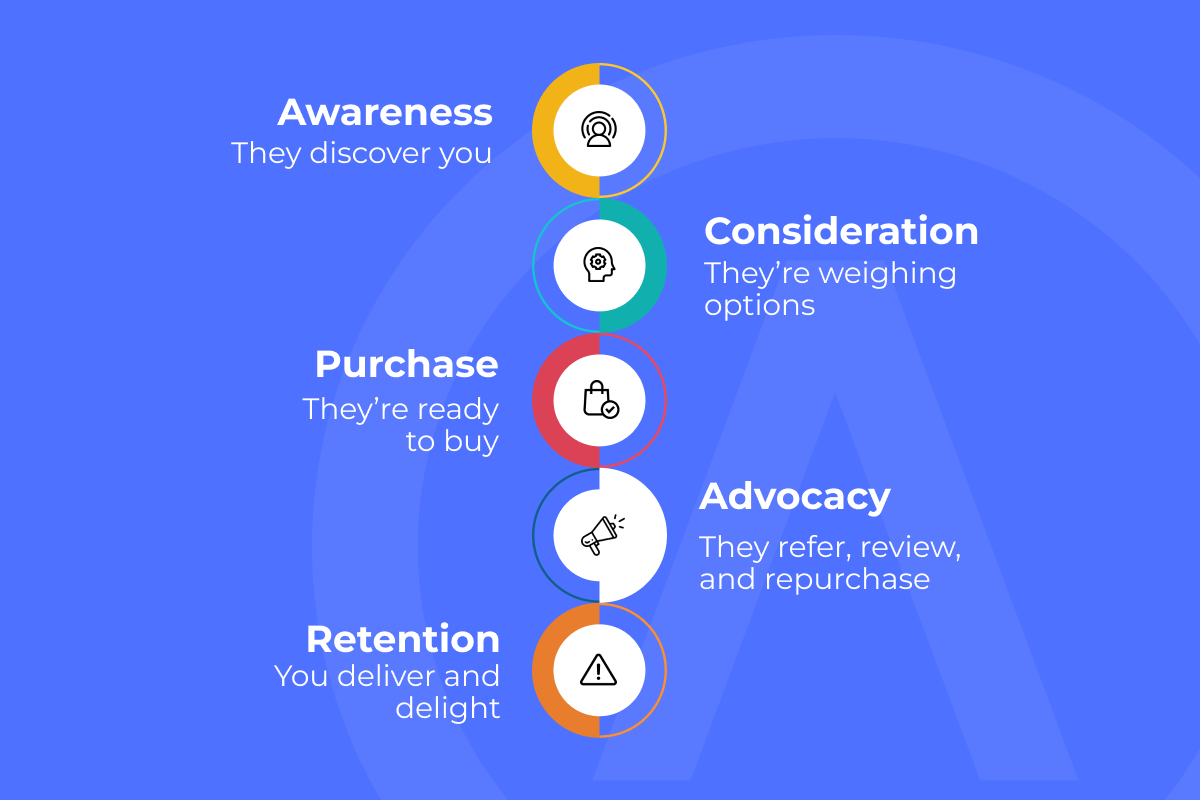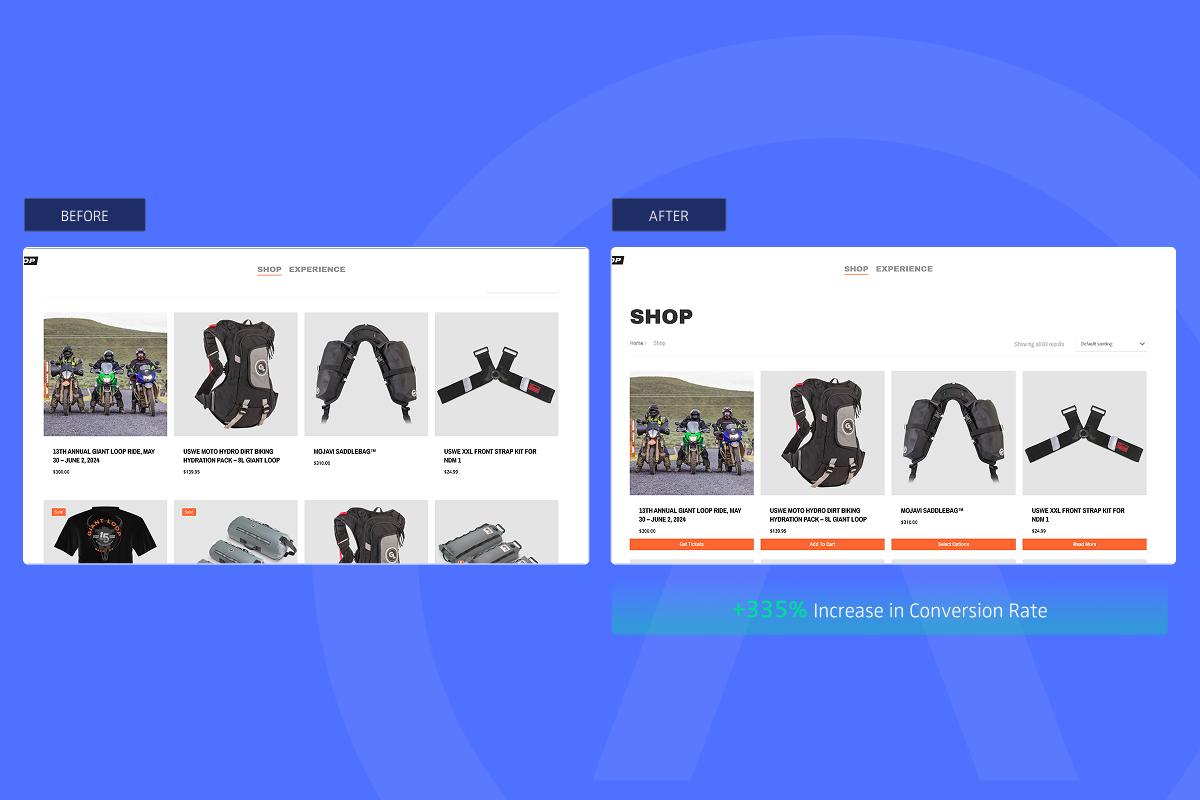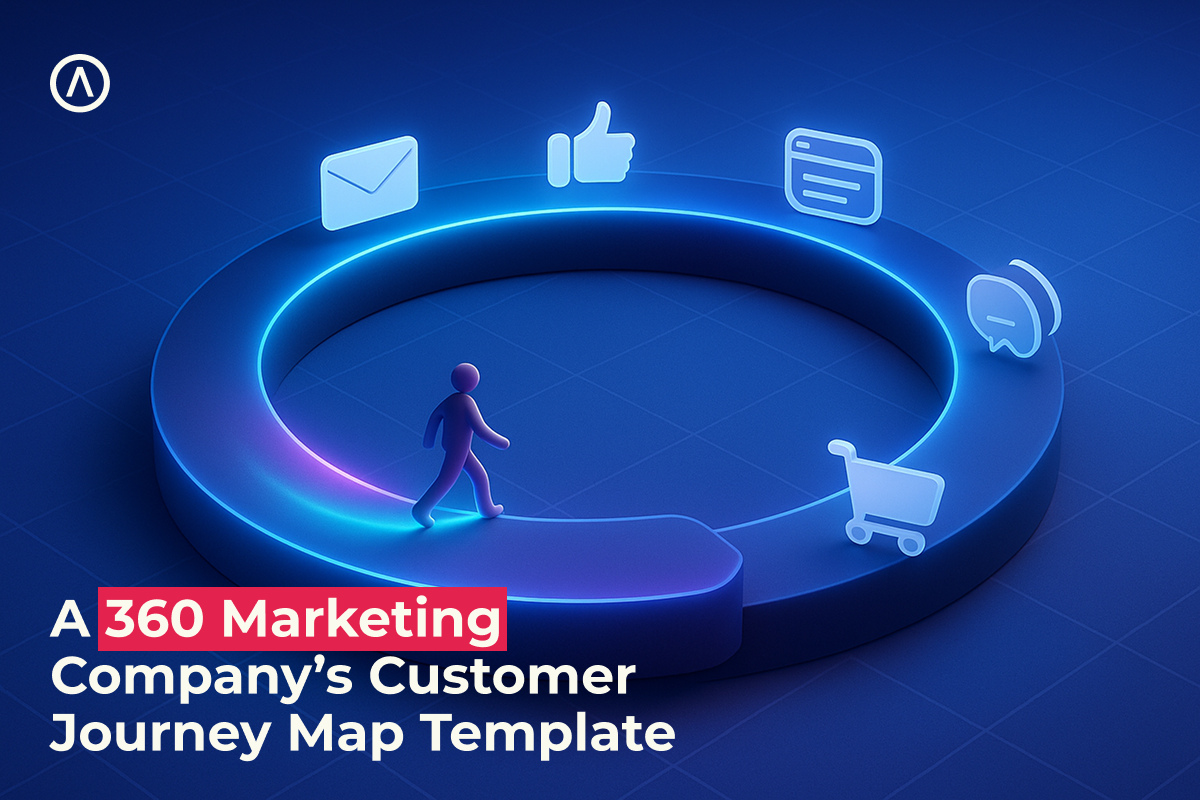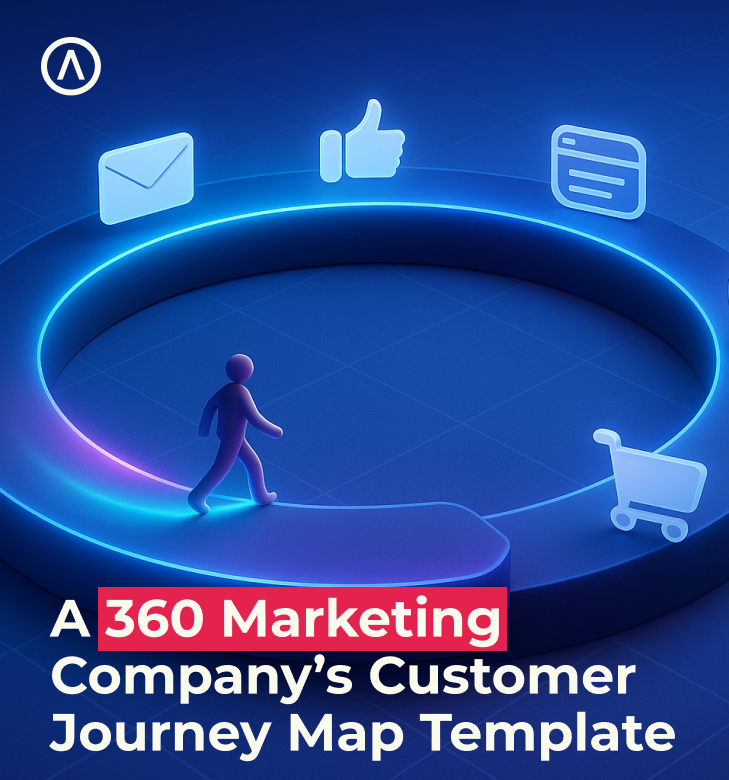Visualize the journey. Spot the gaps. Create better experiences.
Why You Need a Customer Journey Map
Growth isn’t just about reaching more people—it’s about understanding them.
In today’s DTC landscape, brands that win aren’t just selling products. They’re guiding customers through a series of intentional touchpoints that feel seamless, even if they’re strategically planned behind the scenes.
That’s where a Customer Journey Map comes in. It’s your blueprint for seeing the full experience through your customer’s eyes—from first click to loyal repeat buyer.
Why This Template Exists
We’ve helped dozens of DTC brands identify leaks in their funnel, fix friction points, and design journeys that actually convert.
But the first step is clarity. That’s what this template gives you.
This isn’t a generic flowchart—it’s a customizable map designed to help your brand:
- Understand the full buyer journey, from awareness to advocacy
- Align messaging, content, and offers to each stage
- Identify friction points that kill conversions
- Build experiences that drive trust and repeat purchases
🧰 What’s Inside the Template?
We designed this with simplicity and strategy in mind. Here’s what’s inside:
- Stages of the Journey → Awareness, Consideration, Purchase, Retention, Advocacy
- Customer Goals → What your audience wants at each step
- Touchpoints → Every place they interact with your brand (ads, emails, site, etc.)
- Emotions & Pain Points → What they’re feeling—and where friction happens
- Opportunities → Where you can improve, connect, or convert more effectively
- KPIs to Track → Tie your journey to measurable results
What This Resource Will Help You Do
This journey map isn’t just a marketing tool. It’s a decision-making framework.
By using it, you’ll be able to:
- Create messaging that matches your customer’s mindset
- See where drop-off happens—and fix it
- Turn disjointed touchpoints into a cohesive experience
- Align your marketing, creative, and CX teams around one source of truth
Let’s walk through how to use it.
1. Start with the Stages
Your customer journey isn’t linear—but you need a framework.
Use the core stages in the template to define the experience:

2. Map Out the Moments
Under each stage, outline the following:
- Touchpoints → Emails, ads, landing pages, reviews, social content, packaging, etc.
- Customer goals → What are they trying to accomplish right now?
- Emotions → Confused? Curious? Skeptical?
- Friction points → What might stop them from moving forward?
When you see it all mapped, patterns start to emerge. And that’s where the opportunity is.
3. Identify Gaps and Fixes

Here’s where the map becomes powerful.
Start asking:
- Are we answering their questions at the right time?
- Where are we losing trust?
- What’s missing from this experience?
Use the Opportunities column to brainstorm improvements—whether that’s a new landing page, stronger social proof, or a more helpful post-purchase email.
4. Make It a Living Doc
Customer journeys evolve. So should your map.
Use this template quarterly (or when launching a new campaign) to realign your strategy. Involve your team, gather feedback, and revisit performance KPIs to adjust based on what’s working.
Pro Tip: Connect your journey map to your content calendar. They work even better together.
Your Customer Deserves a Better Journey
A great product isn’t enough anymore. You need an experience that feels seamless and strategic. Download the Customer Journey Map Template and start building experiences that work for your team and your customer.
This is the same system we’ve used to help brands increase LTV, improve CX, and drive more consistent revenue.
Download the Free Customer Journey Map Template
Need Help Filling It Out?
Let’s be real—mapping the journey is one thing. Designing for it is another.
If you want support identifying gaps, optimizing touchpoints, or creating content that moves people through the funnel, Algofy can help.
Reach out: contact@algofyoutdoors.com


.png)
.png)




.png)
.png)













